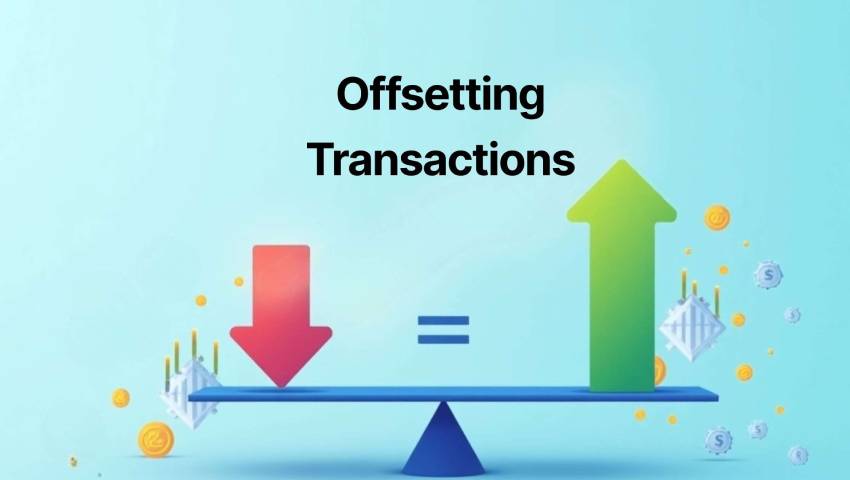
- 10/11/2025
- MyFinanceGyan
- 104 Views
- 0 Likes
- Investment
What is an Offsetting Transaction? — Complete Guide for Indian Investors
In India’s fast-paced financial markets, managing risk is just as important as making profits. One powerful tool for this is the offsetting transaction — a strategy that helps traders and investors neutralize or reduce exposure from existing positions.
This guide breaks down what offsetting means, how it works across markets, and why it’s a crucial part of smart trading.
Definition:
An offsetting transaction is a trade made to cancel or neutralize an existing position.
For example, if you bought 100 shares of Reliance, selling those same 100 shares later offsets your position — locking in gains or limiting losses.
This approach is common across equities, derivatives, commodities, and currency markets in India.
Purpose of Offsetting:
- Manage risk exposure from open positions.
- Lock in profits before market reversals.
- Avoid physical delivery obligations in derivatives.
- Improve capital efficiency by freeing up margins.
Types of Offsetting Transactions:
Equity Market Offsetting:
- Buying and later selling the same stock quantity.
- Example: Buy 100 Infosys shares at ₹1,500; sell them at ₹1,650 — offsetting your position and realizing profit.
Derivatives Market Offsetting:
- Futures: Reverse the contract before expiry.
- Options: Sell an identical option to close your position.
- This allows traders to close trades anytime without delivery.
Commodity Market Offsetting:
- Common on MCX/NCDEX — a gold trader can short an equivalent gold contract before expiry to close exposure.
Hedging Offsets:
- Taking opposite positions in correlated instruments.
- Example: Own Indian Oil shares and short crude oil futures to hedge fuel price risk.
How It Works?
Benefits:
- Reduces risk exposure
- Allows flexibility to exit anytime
- Avoids delivery and complex settlements
- Locks profits efficiently
- Frees margin for new trades
Risks & Limitations:
- Transaction Costs: Frequent offsetting adds brokerage and taxes.
- Timing Risk: Poor timing can reduce potential profits.
- Liquidity Risk: Illiquid assets may not offset easily.
- Complexity: Especially in multi-leg derivative strategies.
Tax & Regulatory Aspects in India:
- Income Tax: Gains/losses from offsetting treated as business income or capital gains.
- F&O Taxation: Classified as business income under Section 43(5).
- SEBI Oversight: Ensures transparency and prevents manipulation.
- GST & Stamp Duty: Applicable on trade value and brokerage.
Conclusion:
Offsetting transactions are a cornerstone of smart trading in Indian markets. By balancing risk and optimizing profits, they help traders maintain stability amid volatility.
When executed with proper timing and understanding, offsetting transforms trading from speculative to strategically managed investing.
Disclaimer: The content above is intended solely for educational and informational purposes. It does not constitute financial advice or a recommendation to invest in any specific IPO.



